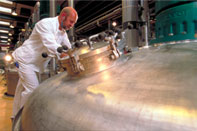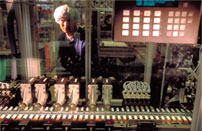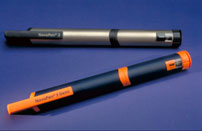Making human insulin
For many years, insulin was obtained by purifying it from the pancreas of cows and pigs slaughtered for food. This was expensive, difficult and the insulin could cause allergic reactions.
Once the structure of human insulin had been found, in 1955, the cow and pig insulin could be chemically modified to be the same as human insulin. It is now made by genetically-engineered microbes. They produce human insulin in a pure form that is less likely to cause allergic reactions.
Producing human insulin
Human insulin is produced in a very controlled and clean environment.
Genetically-engineered bacteria are grown in large stainless steel fermentation vessels. The vessel contains all the nutrients needed for growth.
When the fermentation is complete, the mixture containing the bacteria is harvested. The bacteria are filtered off and broken open to release the insulin they have produced. It is then purified and packaged into bottles for distribution.
All the equipment is kept sterile so that contamination cannot get into the medicine. Regular checks make sure that all the processes are working properly and the insulin meets the required quality.
Question 4
Drag these processes into the correct order for making human insulin from genetically engineered bacteria.














